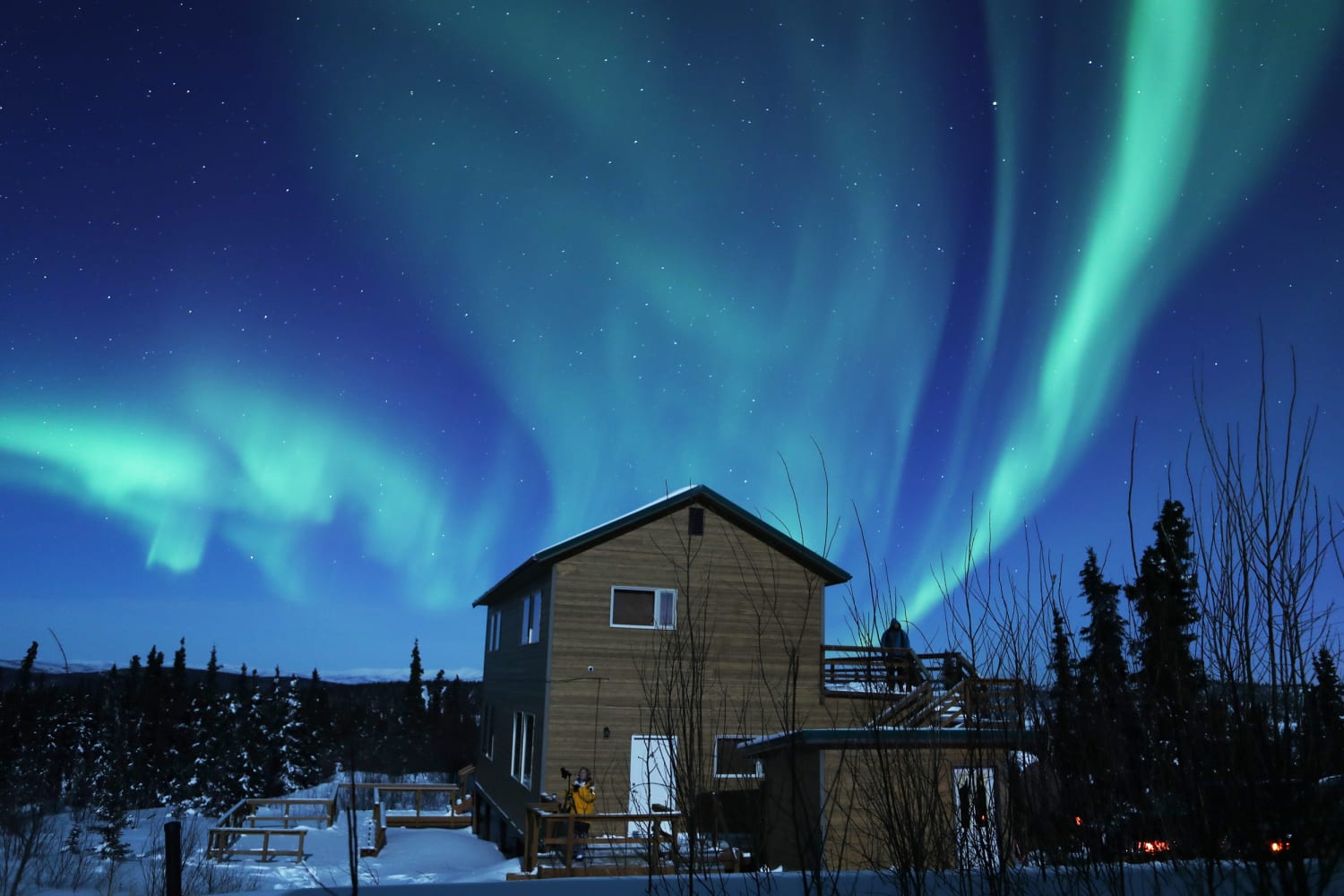

The Northern Lights may light up the skies across 17 states this week, supercharged by a solar storm that will make the dramatic and colorful displays visible at lower latitudes than normal.
Weather permitting, the Northern Lights will be visible in Alaska, Idaho, Indiana, Maine, Maryland, Michigan, Minnesota, Montana, New Hampshire, New York, North Dakota, Oregon, South Dakota, Vermont, Washington, Wisconsin and Wyoming, according to forecasters at the University of Alaska Fairbanks. The shimmering light show will also be visible from several Canadian cities, including Toronto and Vancouver.
If conditions are clear, cities such as Helena, Montana; Montpelier, Vermont; Minneapolis and Milwaukee are expected to have “highly active auroral displays” visible overhead. Meanwhile, in Idaho, Indiana, Maryland, Oregon and Wyoming, the northern lights will appear low on the horizon, according to the University of Alaska Fairbanks.
Auroras are best viewed from locations that are clear and dark, according to the university’s Geophysical Institute. If conditions are clear and the Northern Lights are particularly bright, they can be seen from up to 600 miles away, according to NOAA. Skywatchers should pick a spot away from city lights, the agency said, and aim for “within an hour or two of midnight (between 10 PM and 2 AM local time).”
NOAA provides short-term, 30-minute forecasts of the location and intensity of auroral displays that include tips for how best to view them from various places around the world.
The Northern Lights, also known as the aurora borealis, are triggered by storms that erupt from the sun. These solar storms eject clouds of charged particles into space that occasionally rain down on Earth’s magnetic field. The colorful neon lights are created when these charged particles collide with atoms and molecules in the planet’s upper atmosphere, according to the National Oceanic and Atmospheric Administration.
Auroras appear most commonly as shimmering displays of green light, but reddish, pink, blue and purple hues can also be seen, depending on the composition and density of the atmosphere.
The Northern Lights are typically seen at high latitudes, but strong solar storms can intensify the displays, making them visible in places farther south than normal.
The University of Alaska Fairbanks is also forecasting “moderate” auroral activity on Friday, with displays visible in parts of northern Wisconsin, Minnesota and Michigan.

 Latest Breaking News Online News Portal
Latest Breaking News Online News Portal




